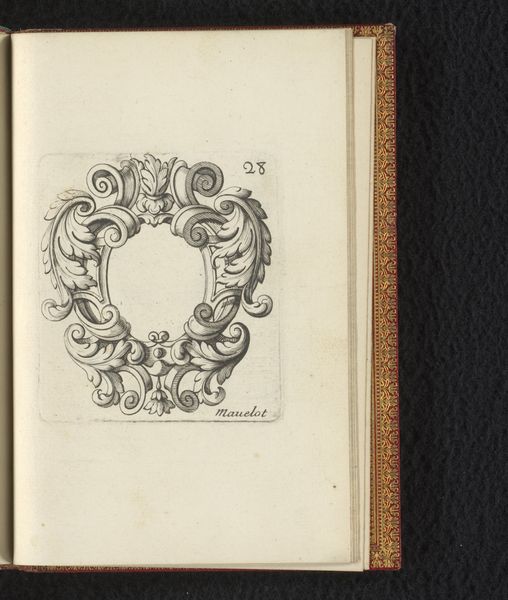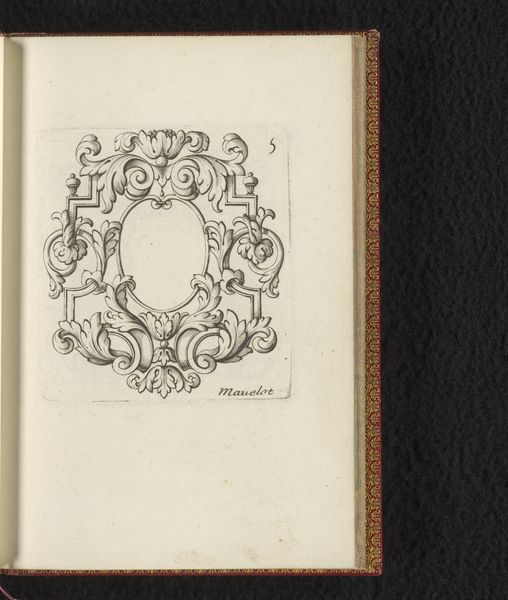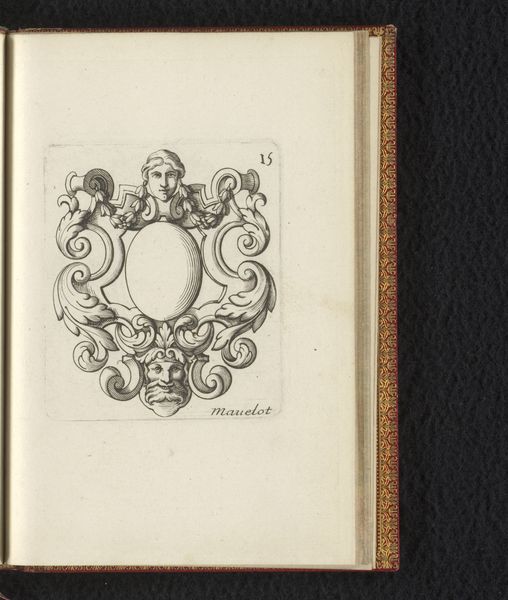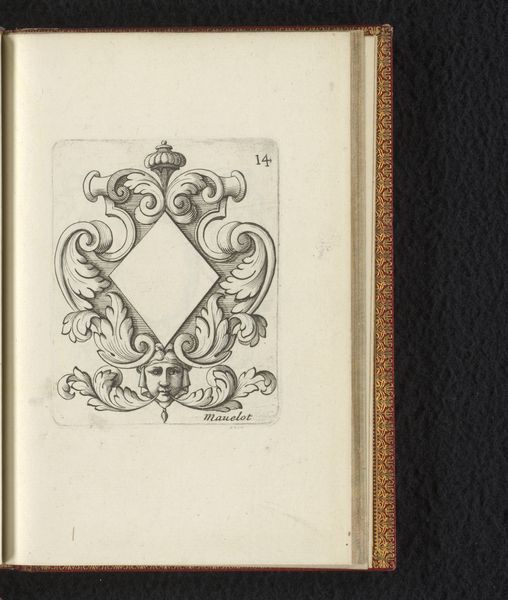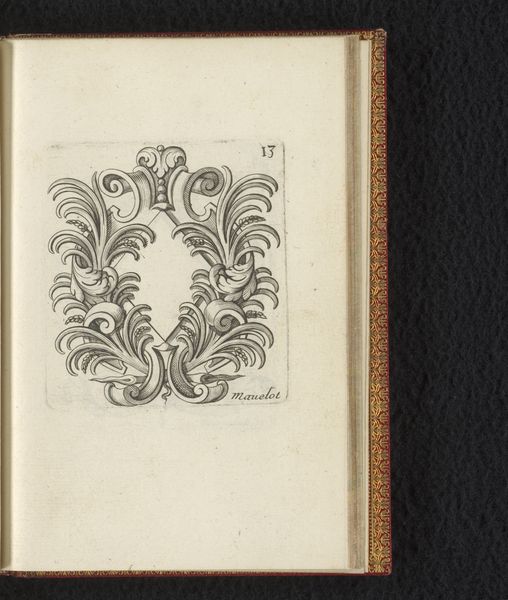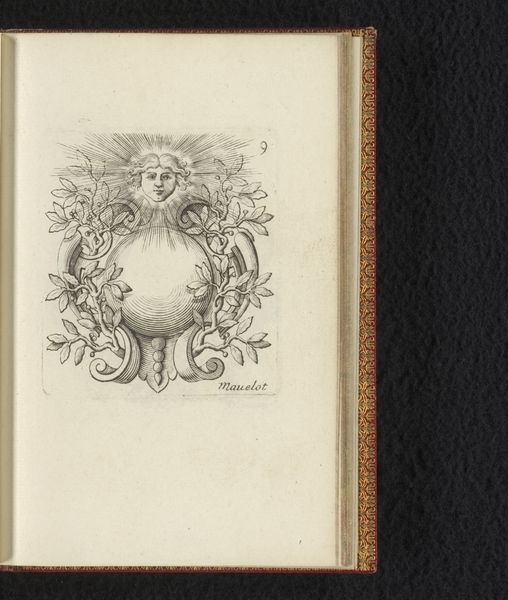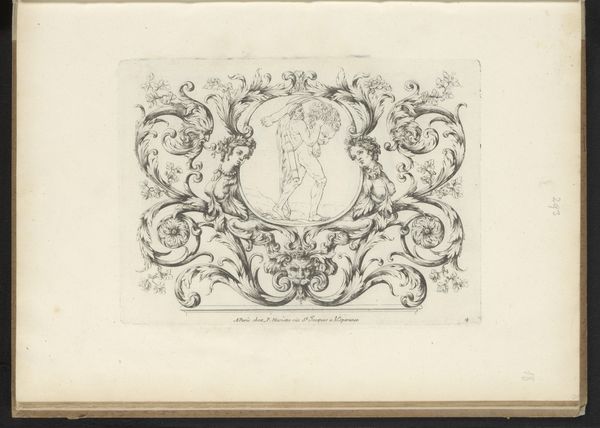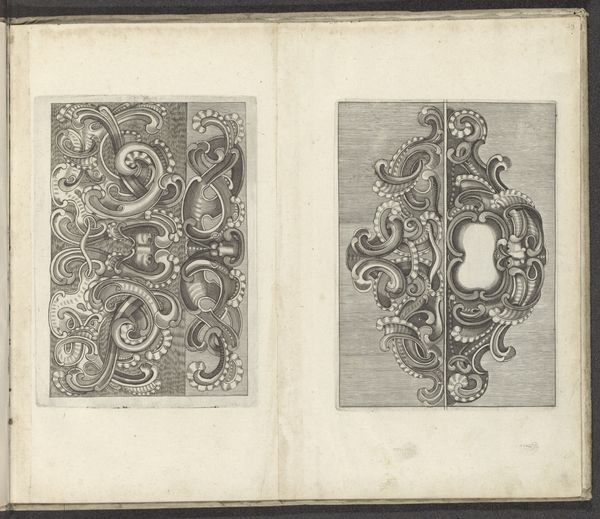
drawing, intaglio, pen
#
drawing
#
baroque
#
intaglio
#
form
#
coloured pencil
#
geometric
#
line
#
pen
Dimensions: height 77 mm, width 67 mm
Copyright: Rijks Museum: Open Domain
Curator: This is Charles Mavelot’s “Cartouche met schelp en parelranden,” an intaglio print, dating to 1685. Editor: My first impression is its intricate craftsmanship. The baroque detail and repetitive shapes create a very soothing visual rhythm. It makes me wonder what it would have been used to frame. Curator: Precisely! Cartouches of this era functioned as ornamental frames – think elaborate borders for portraits, mirrors, or even architectural elements. Consider the material constraints: the fine lines achievable through intaglio influenced the designs. Copperplates would need careful preparation and expert handling. Editor: The use of the shell and pearl motifs really speak to that era's love of ornamentation and classical reference, the shell evoking Venus and rebirth, while pearls have long been a symbol of purity and status. This elevates the idea of framing something ordinary to enshrining something precious. Curator: It's also about consumption; these prints disseminated design ideas to artisans and patrons alike. They democratized access to high style by circulating them on paper, rather than only as custom commissions. A furniture maker in Lyon, for example, could draw inspiration from Mavelot in Paris. Editor: Yes, the way such imagery then proliferated across Europe says a great deal about shared values and aspirations of the time, not just the display of wealth but also education and refined taste. I also find it poignant that the frame remains empty, a silent invitation to add something. Curator: Indeed, that openness highlights its core function: the industrial manufacturing and selling of possibility. It's not just an artwork; it's a blueprint. And from a manufacturing point of view it offers infinite reuse possibilities and interpretations. Editor: So much is communicated through these small images. Considering this artwork, it becomes evident that seemingly small prints carry a wealth of cultural and economic information about their time. Curator: Precisely. An exquisite example of mass customization within baroque design, where technique shaped distribution and consumption.
Comments
No comments
Be the first to comment and join the conversation on the ultimate creative platform.
